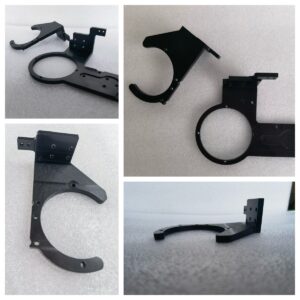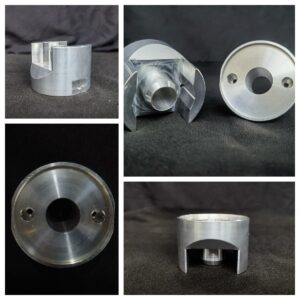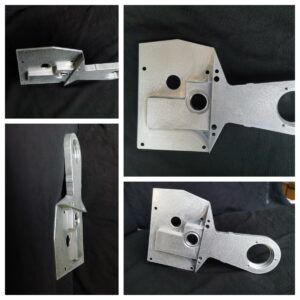The linear bearing lifting base is a common mechanical component used in automation systems, CNC machines, and 3D printers. It provides precise linear motion support and ensures smooth, stable vertical movement of mechanical parts. Below is a typical machining workflow and key considerations for manufacturing this component:
?? Machining Workflow
Design & Drafting
Define critical design parameters including dimensions, load capacity, and material type.
Create detailed CAD drawings with precise tolerances and specifications.
Material Selection
Choose materials based on load-bearing requirements and environmental conditions. Common options include aluminum alloys, carbon steel, or engineering plastics.
Material Cutting
Raw material is cut into rough shapes using a band saw, laser cutter, or waterjet system.
Rough Machining
Use CNC milling or turning machines to remove excess material and form the basic structure.
Precision Machining
Final dimensions and surface finishes are achieved using high-precision CNC milling, surface grinding, or boring to ensure accurate linear motion.
Drilling & Tapping
Drill mounting holes and thread them as per design requirements to allow for bearing installation and structural mounting.
Surface Treatment
Apply surface finishes such as anodizing, powder coating, or zinc plating to improve corrosion resistance and appearance.
Assembly
Assemble the linear bearings, lifting mechanism (e.g., stepper motor or screw drive), and other components, ensuring smooth alignment.
Functional Testing
Test for smooth vertical travel, load-bearing capacity, and overall mechanical stability.
?? Important Considerations
Dimensional Accuracy: Maintain tight tolerances throughout the machining process to ensure smooth linear motion and long-term durability.
Material Suitability: Select corrosion-resistant or wear-resistant materials based on the operating environment.
Lubrication: Regular lubrication of linear bearings is essential to reduce friction and extend service life.
Safety Measures: Follow safe operating procedures during machining and assembly; use proper personal protective equipment (PPE).























